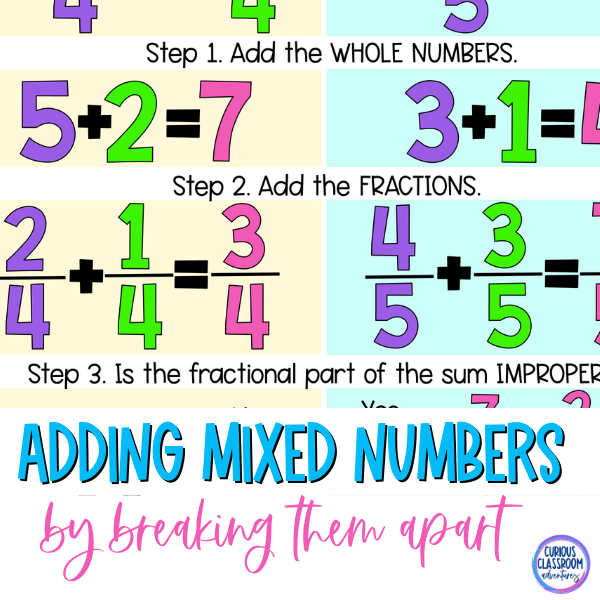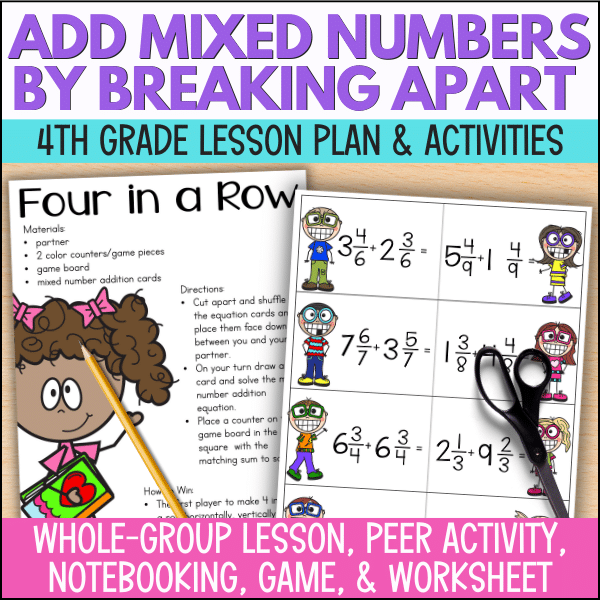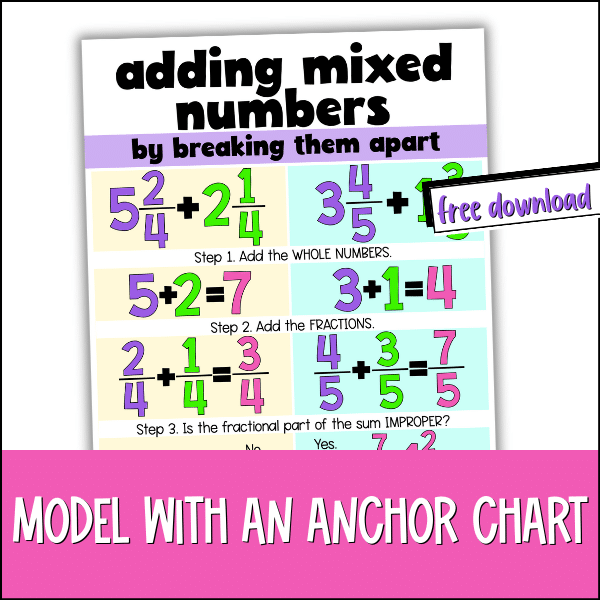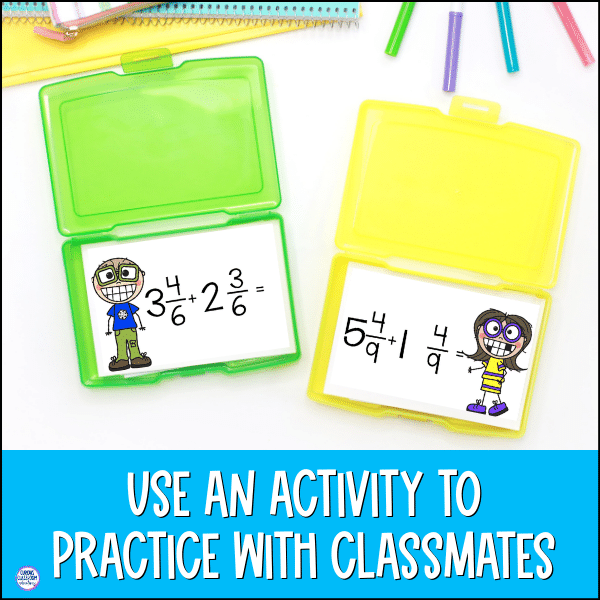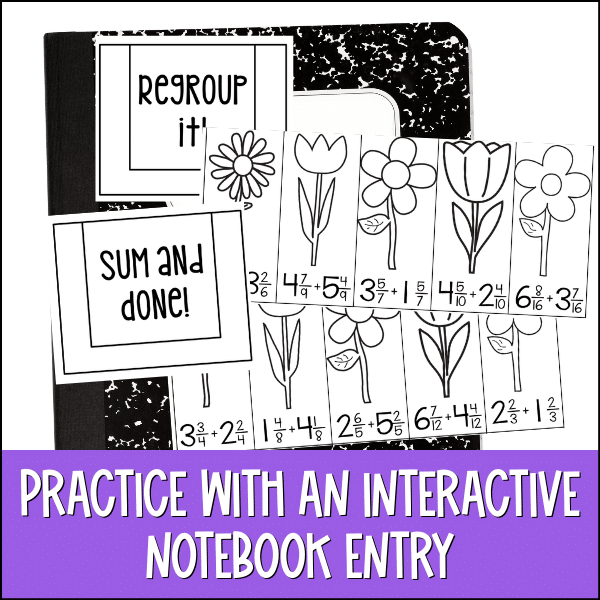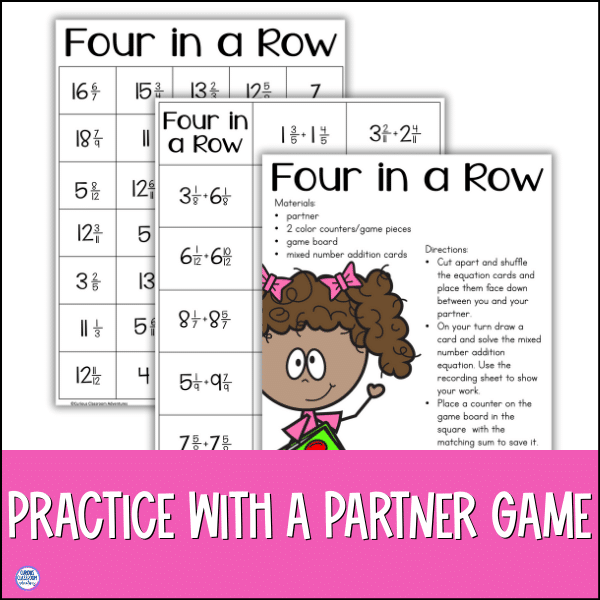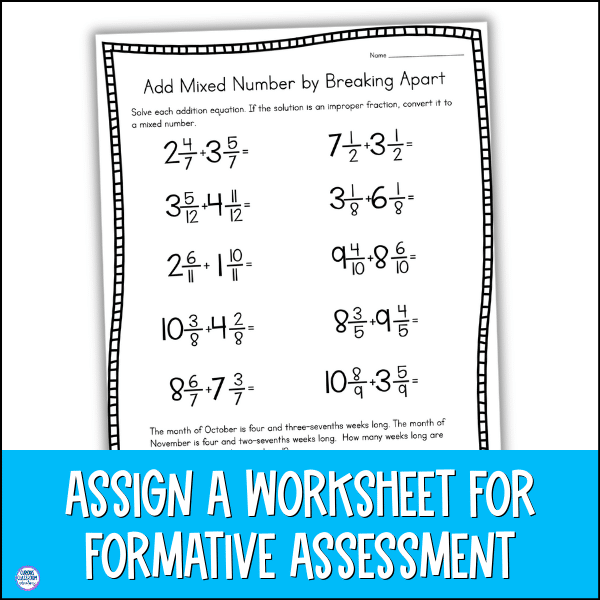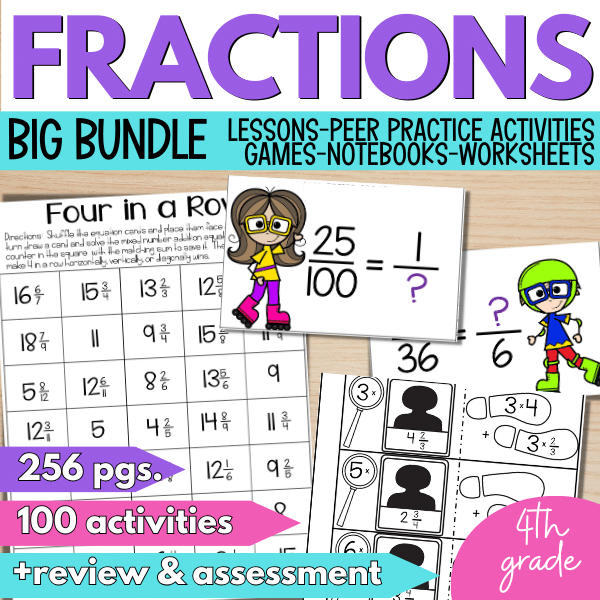Teaching adding mixed numbers can sometimes feel like juggling fractions and whole numbers all at once, but when you break it down (pun intended!), it’s not as tricky as it seems! One strategy that works like a charm is breaking apart mixed numbers—and I’m here to walk you through how to teach this skill in a way that makes your students go, “Oh, I get it!”
So, grab your dry erase markers and let’s get into the nitty-gritty of adding mixed numbers step by step! All the activities in this lesson can be found in this done-for-you resource so you don’t need to waste precious time on unnecessary prep.
Step 1: Breaking It Down with an Anchor Chart
Start by reviewing the steps for adding mixed numbers by breaking them apart using a handy-dandy anchor chart. Make sure the chart clearly shows how to break mixed numbers into their whole number and fractional parts. Here’s how you can model this:
- Add the whole numbers first.
- Add the fractions next.
- Check the fractions—do they make a number greater than one? If yes, it’s time to regroup.
For example, let’s work through 2¼ + 6¼ together.
- Add the whole numbers first: 2 + 6 = 8
- Then add the fractions: ¼ + ¼ = ½
- Now, combine everything: 8 + ½ = 8½
Boom! You’ve just finished adding mixed numbers successfully! You can create your own anchor chart, or use this FREE done-for-you version.
Step 2: What Happens When Fractions Add to More Than One?
Sometimes, when you add the fractional parts, they’ll total more than 1, and that’s when regrouping comes into play. Here’s an example:
Let’s take 2¾ + 6¾:
- Add the whole numbers: 2 + 6 = 8
- Add the fractions: ¾ + ¾ = 6/4
Now, we can see that the fractional part of the sum is improper. It’s time to regroup:
- Convert the improper fraction to a mixed number, 1½, which gives us an extra 1 to add to our whole number total.
- So, 8 + 1 = 9, and we’re left with ½.
That gives us 9½ as the final answer! This is a great opportunity to talk about how regrouping works with fractions and mixed numbers. You can even color-code this on your anchor chart to make it easier to see.
Step 3: Time to Practice: Card Game Fun
Now that you’ve modeled breaking apart and adding mixed numbers, it’s time to get students practicing! One fun way to do this is through a group card game. Here’s how it works:
- Print and cut apart one set of mixed number addition cards for each group of 4 students. (You can find premade cards here.)
- Students will rotate through the following roles:
- Person #1: Holds the cards for person #2.
- Person #2: Draws a card and reads the mixed number addition equation.
- Person #3: Solves the problem by adding the whole numbers and fractions separately, regrouping if needed.
- Person #4: Double-checks the answer and works the problem to verify.
If there’s an error, the group will discuss what went wrong and help each other find the correct answer. Afterward, they’ll rotate jobs so everyone gets a turn to solve.
Not only is this a great way to get in some mixed number practice, but it also encourages collaboration and peer teaching—win-win!
Step 4: Flower Pockets for Sorting Equations
Here’s a creative and crafty way to reinforce adding mixed numbers: flower pockets! This is perfect for students who love tactile activities.
- Have students glue two pockets into their notebooks (leave the tops open!).
- Next, students will cut out flower pieces with mixed number equations written on them.
- They’ll solve the equation on each flower, writing the answer on the back.
- Once solved, students will sort their flower equations into the correct pocket:
- One pocket for sums that did not need regrouping.
- Another pocket for sums that did need regrouping.
This activity is a fun way for students to self-check their work for adding mixed numbers, and they get the bonus of building a little flower garden in their notebooks!
Step 5: Four in a Row – Fractions Edition!
Who doesn’t love a little friendly competition? For this Four in a Row game, students will play in pairs and try to get four in a row by correctly adding mixed numbers.
Here’s how it works:
- Draw a card with an addition equation.
- Solve the equation by breaking apart the mixed numbers and adding them.
- If the answer is correct, mark the solution on the game board with a counter (or a mini sticky note—whatever works for you!).
- The first player to get four in a row on the game board wins!
This game is a great way to reinforce what they’ve learned, and it turns practice for adding mixed numbers into something that feels like fun rather than work. Plus, who doesn’t love winning?
Step 6: Adding Mixed Numbers by Breaking Apart Assignment
Finally, once your students are comfortable with breaking apart and adding mixed numbers in class, you can assign them some independent practice to reinforce or assess what they’ve learned by using a worksheet.
Consider including a mix of problems that require regrouping and those that don’t so students get a well-rounded review. You can even differentiate by offering some challenge problems where students have to add more than two mixed numbers together—oh, the possibilities!
Adding Mixed Numbers Can Be a Piece of Cake!
When you break it down, teaching students to add mixed numbers by separating the whole numbers from the fractional parts is a piece of cake! And with the games and activities we’ve covered today, your students will be practicing without even realizing it’s “math time.”
From the hands-on card game to the colorful flower pockets and the fun competition of Four in a Row, these activities are sure to make adding mixed number more fun, engaging, and—dare I say—addictive!
So, get ready to break apart some mixed numbers and watch those lightbulb moments start to shine.
For all things adding and subtracting mixed numbers, check out the whole 4th Grade Fractions & Mixed Numbers unit.
Get 4 Free Resources Every Month!
You read that right! I’ll share an easy-to-use and engaging upper elementary resource straight to your inbox every week along with a fabulous classroom idea or two to make teaching a little less work and a lot more fun!
Here’s the first freebie to get you started!
CLICK HERE TO GRAB YOUR FIRST FREE RESOURCE TODAY!

